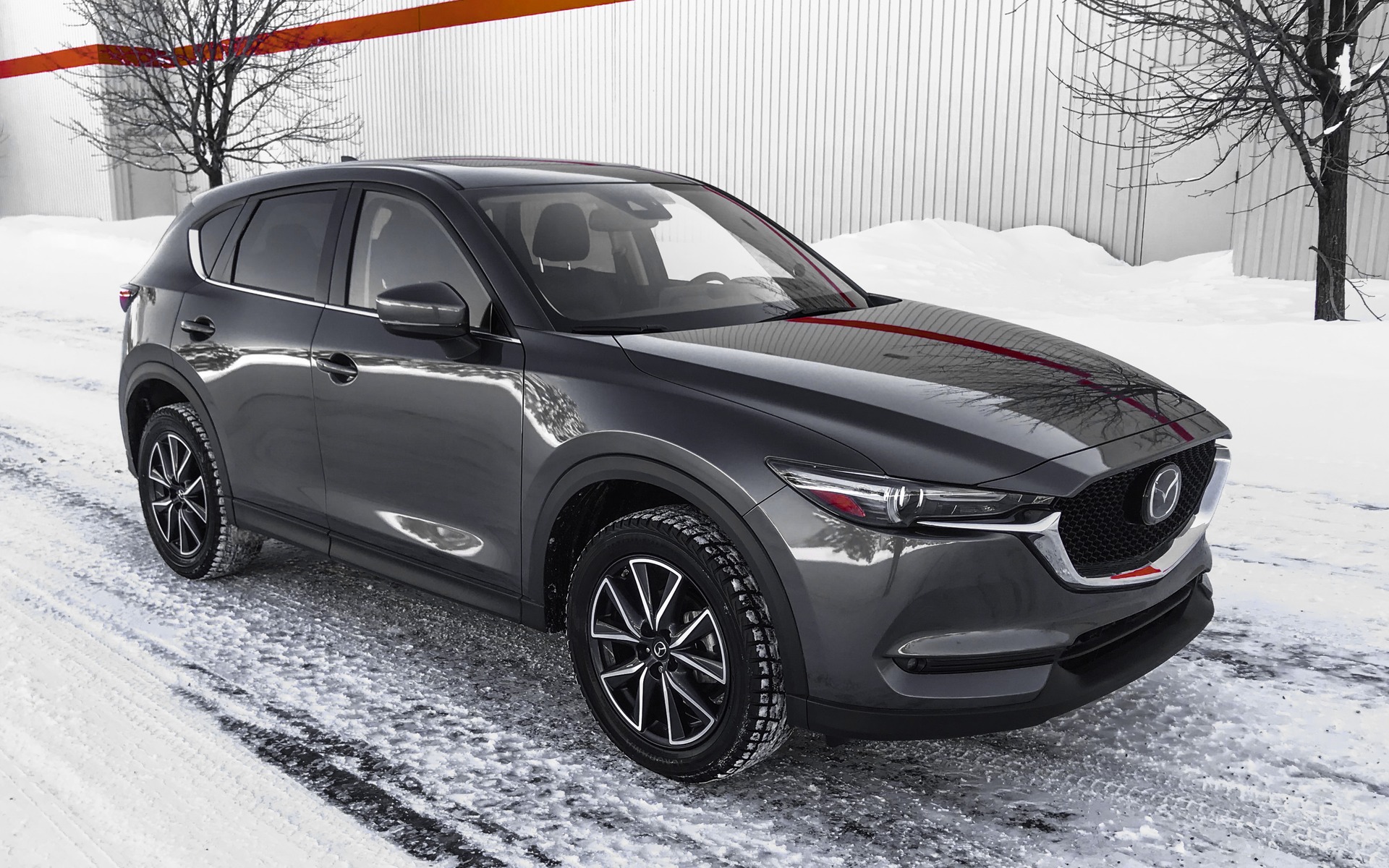2017 Mazda CX-5: Ready to Take on the Big Boys


Mazda’s CX-5 compact SUV was reworked for 2017 after having been introduced in 2012 as a replacement for the outgoing CX-7. What’s impressive is it has steadily increased in sales every year since its introduction. In 2017, Canadians bought 25,123 of them—a 1.1% increase over 2016. The new redesigned model hit dealers about halfway through the year, so it’s likely to see more gains in 2018.
The overall look of the CX-5 remains similar to the previous generation, but it’s reasonable to say the vehicle has become a little classier or sleeker in its design. The front grille has been enlarged, and we have thinner, narrower headlights (which are now LED as standard equipment) to complete the transformation up front. The side panels are smoother with fewer creases and the rear lights have been similarly “sleekened” if I may coin a new term.
Read also
Mazda has done an impeccable job with the CX-5’s interior, making it reminiscent of a much more expensive luxury vehicle. The test vehicle is the top-of-the-line GT trim, so it’s natural to expect a certain level of pampering, but I still feel the interior goes beyond what’s expected. The stitched leather extends itself to most of the dash as well as much of the door panels and floor stack. The head-up display (Mazda calls it Active Driving Display) is projected onto the windshield rather than the lesser popup visor found on some other cars in Mazda’s lineup. The old infotainment screen, which was previously integrated into the dash, is now a more modern tablet-style screen sitting on top of it. The aluminum knobs and brushed silver trim are of extremely high quality. If you put this all together, it’s a package that could rival a luxury brand’s offerings any day of the week.
My one disappointment (if you could even call it that) was the steering wheel leather a bit firm and the heated portions are only from 8-10 and 2-4. In other words, Mazda wants you to keep your hands at the standard 10-2 driving position if you wish to benefit from the heater which I didn’t appreciate one bit.

Minor grievances aside, let me tell you why this crossover will win you over: the infotainment system. Mazda Connect’s menus are intuitive, easy to learn and nice to look at, which many manufacturers seem to struggle with. Not only that, but the controls with their brushed aluminum finish are what I’d expect to find in a BMW. The crème de la crème is the location of the volume button and rotary dial to work the system, which are located where you’d normally find the handbrake. It’s the perfect position to control things because you don’t need to reach for them. Heck, you don’t even need to take your eyes off the road because it’s as if the car fits your body perfectly. Compare this to Honda’s ridiculously tiny touchscreen volume controls (now being replaced by knobs on newer models, thankfully) and it would make or break the sale for me without question.
Mechanically the new CX-5 benefits from a chassis which is 15% stiffer and a new technology that Mazda calls G-Vectoring Control. According to Mazda, “G-Vectoring Control (GVC) comes standard across all trim levels of the 2017 Mazda CX-5, at no extra cost to the customer. The all-new, Mazda-exclusive, technology uses engine timing to control chassis dynamics, leading to smoother, more accurate steering inputs.”
I’m not sure the average buyer will be able to notice the difference in chassis stiffness or handing improvement as a result of G-Vectoring, but they make for convincing sales pitches. After all, who doesn’t like to hear that the new model has been improved in certain performance areas.
The CX-5 did indeed drive quite nice with precision handling, ample power and a very quiet ride. The standard (and only) engine at this time the CX-5 is a SKYACTIV-G 2.5-litre four-cylinder unit producing 187 horsepower and 185 lb.-ft. or torque. Mazda’s i-ACTIV all-wheel drive system handled a snowstorm like a champ, which made me realize I never want to be without AWD in the winter.

When you look at the sales numbers, the CX-5 placed sixth, just edging out the new Chevy Equinox by about a thousand units. The Hyundai Tucson surged 28% in 2017 and took fifth place with 30,467 units sold. The Nissan Rogue sold 43,418 units, the Ford Escape 47,880 units, the Honda CR-V 50,443 units and the best-selling compact SUV was the Toyota RAV4 with 50,894 sold. I feel like the CX-5 should be higher in that list given all that it offers, but I expect it will continue to do improve. Mazda would have to double its current sales to reach the top echelon but if they keep offering a product that feels more expensive than it really is they’ll succeed.
The 2017 Mazda CX-5 starts at $24,900 before freight and delivery charges, and tops out at $36,300 for the GT version equipped with the Premium package.








